Hey dudes, In this article I will mention the beautiful birds in Maryland where you can find a lot of birds for Photography.
This list of the most beautiful birds in Maryland includes many common birds.
You can find birds like Pileated Woodpecker, Northern Cardinal, House Finches, Black Capped Chickadee, Baltimore Oriole, Northern Cardinal, Blue Jay, Hooded Merganser and Yellow-bellied Sapsucker on this list.
Use it to plan your next trip to photograph some of these amazing things.
Beautiful Birds in Maryland for Photography
The Top 8 Beautiful Birds in Maryland list with definition and photo. In the list of birds in Maryland, 8 different species have been recorded over the past 25 years.
Here is the Maryland Birders’ Top 8 Birds List:
Pileated Woodpecker
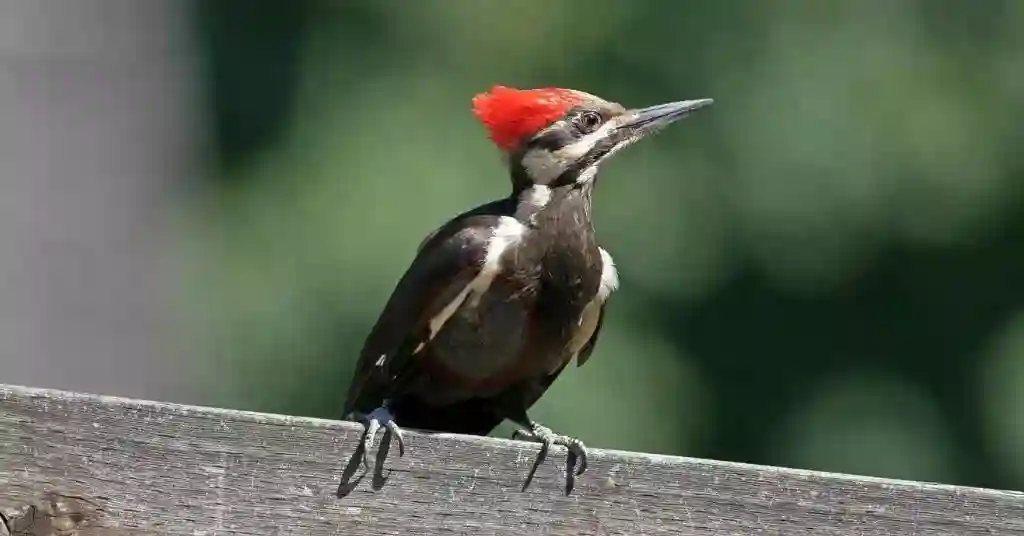
Pileated Woodpecker is a large woodpecker known for its distinctive “pileated” profile. Although it is commonly seen at forest edges and the edge of fields.
It’s large size (41 – 46 cm long, 14 – 15 in) and distinctive “pileated” profile usually allows it to elude most casual observers.
In the past, biologists believed that this bird was the smaller Hairy Woodpecker, which occurs from Mexico to Argentina.
They distinguished the species by the presence of a white patch on the rump. The Hairy Woodpecker also has a white rump patch that extends onto the vent.
However, the larger Pileated Woodpecker does not have a rump patch on the vent.
It’s large size, white face, and “pileated” profile are the main features that allow this species to be identified.
Northern Cardinal
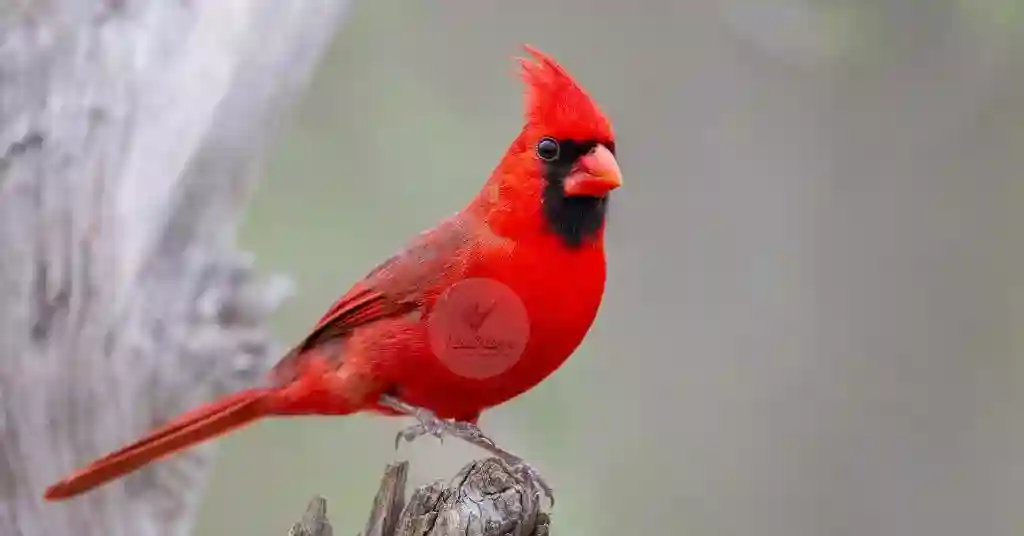
Northern cardinal is the state bird of the state of Ohio. It is commonly known as the redbird and is often called a cardinal.
The redbird is widely distributed throughout North America and prefers a temperate climate to summery conditions.
Redbirds have a life span of 10 to 15 years and breed in the spring and summer months.
They can be found in a variety of habitats including forests, meadows, farms, parks, and suburban and urban areas.
History:
The northern cardinal is the state bird of the state of Ohio and is commonly known as the redbird.
The redbird is one of a few species of birds that have been known to live as close as 3 miles to human habitats, however, they typically live in wild areas.
It prefers a temperate climate to summery conditions and often lives in urban areas, like parks and farms.
Description:
Redbirds are a common passerine bird with bright red underparts, bright red head and rump, and long, sharp, spiny, dark, blue tail feathers.
They have long, pointed wings and a long, sharp, curved beak.
Redbirds have an average length of 3.5-5 inches and can weigh up to half a pound.
Northern Cardinals usually come in four different colors: blue, red, yellow, and black, with blue being the most common color.
Blue Northern Cardinals are often very bright and iridescent and yellow and black coloration are rare.
Northern Cardinals can be found in four different plumages: in the first plumage, they are mostly black with a yellow belly.
In the second plumage, they have a blue head and yellow-orange back. In the third plumage, the head and back are black.
The fourth plumage has black wings, legs, and beak. Redbirds do not have any white or gray feathers on their bodies.
Behavior:
Northern Cardinals are active throughout the day and spend much of their time in a small territory where they roost together at night.
They may come and go from their roost to the feeders throughout the day.
Because the breeding season is late, most Cardinals are seen from February to May.
The Northern Cardinal usually occurs in colonies of several hundreds of birds, which may sometimes number in the thousands.
They feed on a variety of seeds and insects.
The Northern Cardinal may be a seed feeder or insect-gatherer, usually feeding on a particular plant type in a certain habitat or on a specific insect order or insect family.
It will eat many species of grasshoppers, cicadas, and crickets, which are also its favored food. The cardinals will often flock and fly as a group.
Roosting Cardinals gather in large colonies during the coldest days of the winter and may roost in trees, along fences, and in other protected locations.
They will also congregate around feeders and on sidewalks and in other people’s yards during the nesting season.
Cardinals are very adaptable and will do most of their nest building during the very coldest winter days.
They take advantage of every available source of shelter during the nesting season. Cardinals may roost in trees on either end of the limbs. Cardinals make deep cup nests.
House Finches
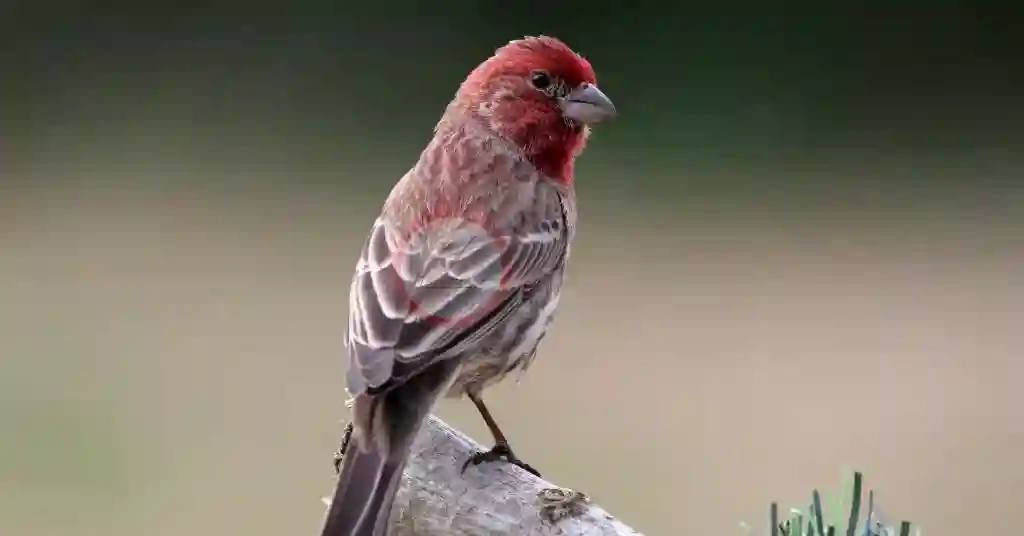
House finches one of the most popular bird species seen in our local birding hot spots. They are found in the forested areas of the Pacific Northwest and Southern California.
House Finches have very brightly colored plumage, which varies between the males and females. House Finches are an example of cooperative breeding.
Which is a type of mating that occurs when one or both males and females of a species are present to care for a group of chicks.
This type of mating allows parents to share their efforts of raising their young.
House Finches only live for about four months. One of the easiest bird species to identify, especially in the springtime when males sing.
Adult Female:
The adult female house finch is gray-brown with a black head. The sides of her face and the rest of her body are a bright yellow. She has a black bill.
Adult Male:
The adult male house finch is gray-brown with a white head. The sides of his face and the rest of his body are bright yellow. He has a black bill.
Black Capped Chickadee
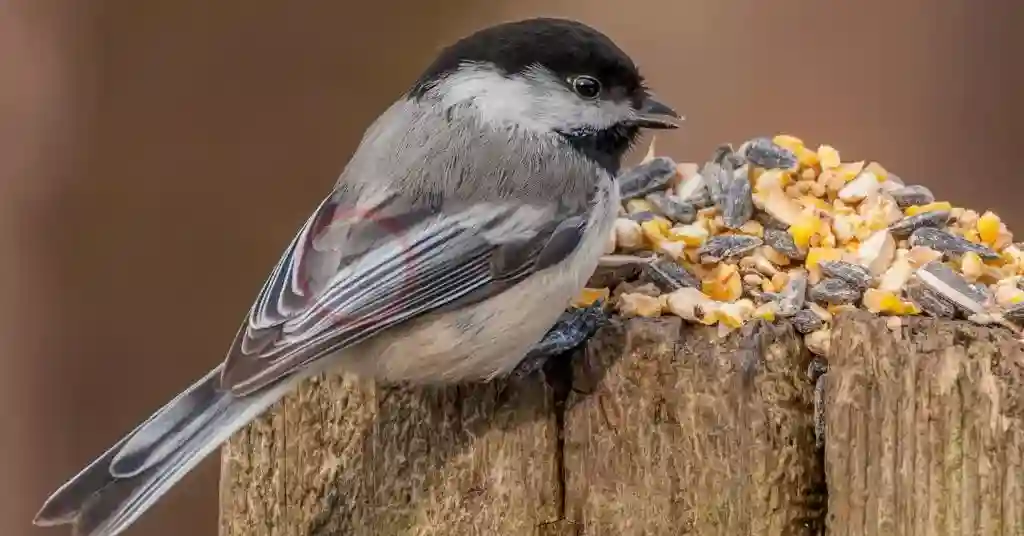
Black-capped Chickadee is also known as the Rock Chickadee. It is a medium sized, chunky sized, slightly brownish gray, songbird.
It has a long tail with the long tail feathers often worn and folded behind the head.
They have long claws on their feet which is an adaptation for their arboreal lifestyle. They are known to perch on a branch, with their feet spread apart like they are on a trapeze.
Their head and neck is fairly large with a long beak, which is slightly down-turned and a pinkish red on the lower half.
This bird will feed on the ground with ground-feeding and foraging for insects, worms and sometimes seeds.
Habitat and Distribution:
The Black-capped Chickadee is found throughout North America, mostly in the U.S.
They can be found in many types of woodlands, parks, deciduous and evergreen forests, and along the edges of streams.
They usually prefer areas that are covered with small bushes and evergreens, but they can be found all over the countryside.
Their usual habitat includes woodlands, parks, deciduous and evergreen forests, shrubbery, and other habitat types.
The Black-capped Chickadee can be found as far north as northern New York and as far south as North Carolina, and they are quite common in the southern United States.
They are most common in the southern United States. They can also be found in Mexico and Canada.
Diet and Feeding:
The Black-capped Chickadee is an omnivore, eating a wide variety of items such as insects, seeds, fruits, nuts, spiders, mollusks, berries and worms.
Their diet consists of many things like seeds, berries, fruit, nuts, bugs, spiders, worms, bark, leaves, bark and fruit.
They spend a lot of their time foraging for food, and they are quite adept at finding food.
They are always moving, and they are able to see and identify their food before eating it. They also eat a variety of seeds and spiders.
Behavior:
The Black-capped Chickadee is a rather timid bird that makes its nest by scratch-digging into an area of wood chips and old leaves.
They usually have one or two parents that help build their nest.
There is also an amount of work involved in building the nest, but the adults do not do much of the work. They use the nest for a number of purposes.
They use it to raise their young, and it is also used for protection for them.
Sometimes, when they are in a place where they don’t need to build a nest, they will use other materials, such as grass, leaves, twigs, and bark, to create a nest.
Baltimore Oriole
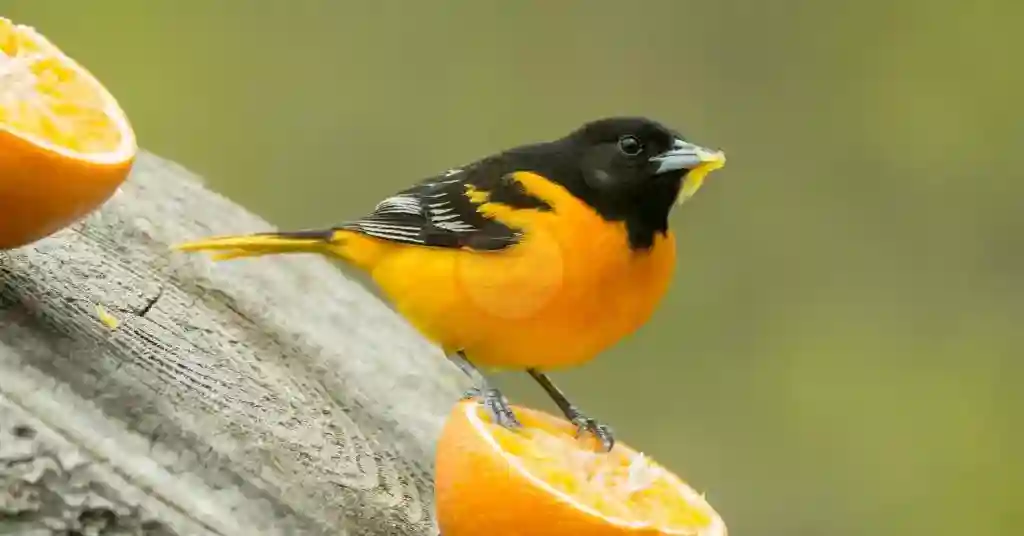
Baltimore oriole is a medium-sized oriole with broad, rounded wings and a long, pointed tail.
A common resident of suburban areas, it breeds along the East Coast of the U.S. and winters in the Caribbean.
It’s diet includes insects, fruits and berries, and its song is highly distinctive.
The Baltimore oriole is the most common species of oriole in North America and one of only two species in the genus Icterus, the other being the European species.
The species name amerindiensis was once used for the Baltimore oriole, but the name has long since been abandoned and replaced with americanus, the typical name for the species.
The generic name is a combination of the Ancient Greek word ikthus, “eagle”, and tereus, “bird”, so that the name means “American eagle”.
Blue Jay

Blue jay, one of the most iconic birds in the world, the Blue Jay is a member of the corvid family. They have a deep russet-colored head with a yellow crown and a gray back.
They have an intense, shrill, descending call, which is the equivalent of a high-pitched “ke-wit, ke-wit,” that is quite similar to a Blue Tit’s keewit call.
This bird is very social and often feeds in groups.
This is because they are often seen with other corvids, such as Blue Tits, Great Tits, and Great Spotted Woodpeckers.
The name “Blue Jay” is a misnomer because they are more of a medium-sized, black-and-white songbird.
They can be found in open woodlands and grasslands, typically near water, where they are easy to spot.
They are a great bird for birders because they have a distinct and distinctive song, making it easy to spot, and they also have an incredible diet.
They usually eat a wide variety of insects, seeds, nuts, fruits, and fruit.
In the winter, they will also be found around the base of pine trees, like Blue Tits, Great Tits, House Sparrows, and the like.
These birds are very protective of their own territory and will only let the people who live in the area pass by without harassing them.
The Blue Jay also has the ability to locate food caches, which is amazing.
They do this by following their own pheromones, or scents.
Blue Jays are found throughout the Northern Hemisphere, but are mostly in eastern North America, the Northern portion of South America, Central America, and Mexico.
Description:
The Blue Jay, or the woodpecker, is a large songbird that has a blue crown and russet-colored face. It has a white stripe through its eyes, down the side of its face, and it’s back.
The head, neck, and breast are black, and the lower part of its body is white. The rest of its upper body and its legs are dark blue, and its feet are black.
Facts:
One of the interesting things about this bird is that it has very loud and distinctive calls and songs.
The male Blue Jay has a loud and deep crow call that sounds like “ho, ho”, and the female calls a sweet and chirping call of “kwee, kwee, kwee”.
In the winter, you will be able to hear “kwee” or “kweet, kweet, kweet” in the early morning.
These are not only great for your ears, but they are very exciting for the rest of the blue jay world. You can also hear Blue Jay’s “kwee” call in the fall.
Blue Jays eat insects, worms, and berries, but you should know that this bird also takes food away from its nestlings.
If the bird notices that a nestling is too far away or has too much food in its mouth.
It will fly over to the nest, call for its mate, and give it a push. The mate returns, grabs the food, and flies off with it.
The Blue Jay is not one of the most intelligent birds, but it will work hard to ensure the survival of its family.
The Blue Jay can be found all over the U.S. and the whole of North America, and it is considered to be a very important bird in Canada.
The Blue Jay is a species that is listed in the U.S. and Canadian bird lists, but in the U.S., it is listed as threatened. In Canada, it is threatened with extinction.
Hooded Merganser
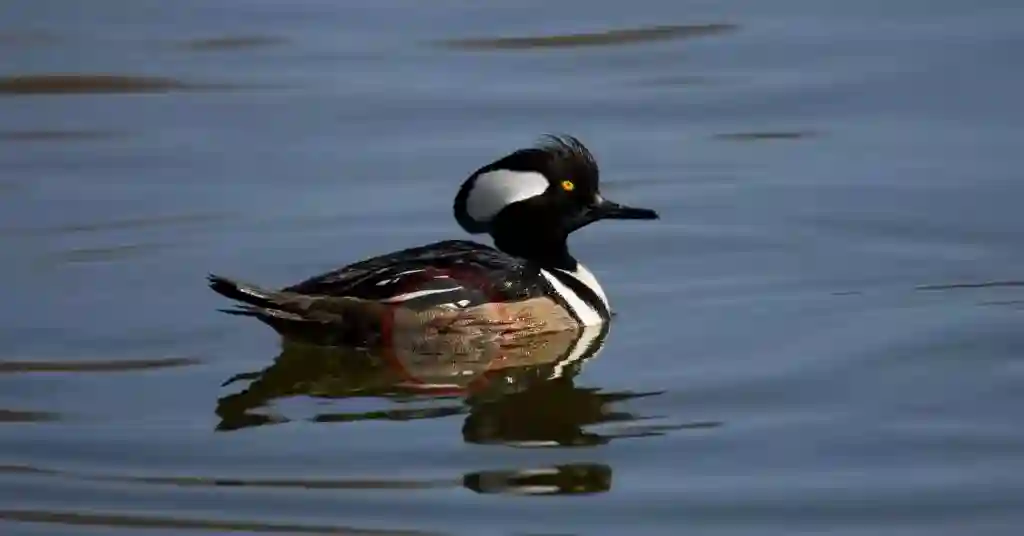
Hooded mergansers can usually be found in open areas such as marshes, lakes, or slow-flowing rivers. Unlike other mergansers, they are never associated with wetlands.
During the breeding season, males will often circle overhead during courtship displays, and in the winter, their presence may be indicated by vocalizations or an “aerial dust-up.”
Hooded Mergansers usually feed from surface waters at dusk and dawn.
They will catch fish using a horizontal plunge. During the breeding season, they can be found fishing in large ponds, reservoirs, and slow-flowing rivers.
They will spend a large amount of time preening, and these feathers often form a patch of color across the head.
Like most ducks, hooded mergansers are also known for their ability to dive.
As a diving duck, they can be found along the coast, often swimming in water a few feet deep.
They will fly to shallow waters and submerge for food, where they use their long, curved bill to catch prey.
Reproduction:
Hooded Mergansers usually travel long distances to find the proper habitat.
The largest recorded breeding population was in an area of western Tennessee called the Dickson Chicksink.
And the largest known wintering population was on the northern shore of Lake Huron.
The breeding season for hooded mergansers can be extended, and during these times they are more likely to be seen on large lakes and reservoirs.
Hooded Mergansers are monogamous, and pairs will stay together for a lifetime.
Pairs stay in one nest site until they hatch, and then they will move to a new nesting site as they raise their young.
Hooded Mergansers have a fairly wide variety of breeding sites. Their preferred habitat is areas with open, marshy terrain.
They are often found in grass-lined pools, shallow creeks, and even the edges of sand dunes.
This is where they tend to choose a nesting site where their activity won’t be too noticeable.
During the nesting season they need a lot of room to raise a family. A pair needs to provide a territory.
Feeding:
The Hooded Merganser’s diet consists of mostly aquatic animals, such as fish, amphibians, crustaceans, and smaller aquatic mammals.
During the breeding season, hooded mergansers consume up to two-thirds of their body weight in fish daily.
During the winter, they eat fish, frogs, and other aquatic organisms. They also eat some of the vegetation they find along the shore.
They are opportunistic feeders, and they can eat any aquatic creature they see fit. This is the reason they are known as ducks of many food types.
Yellow-bellied Sapsucker
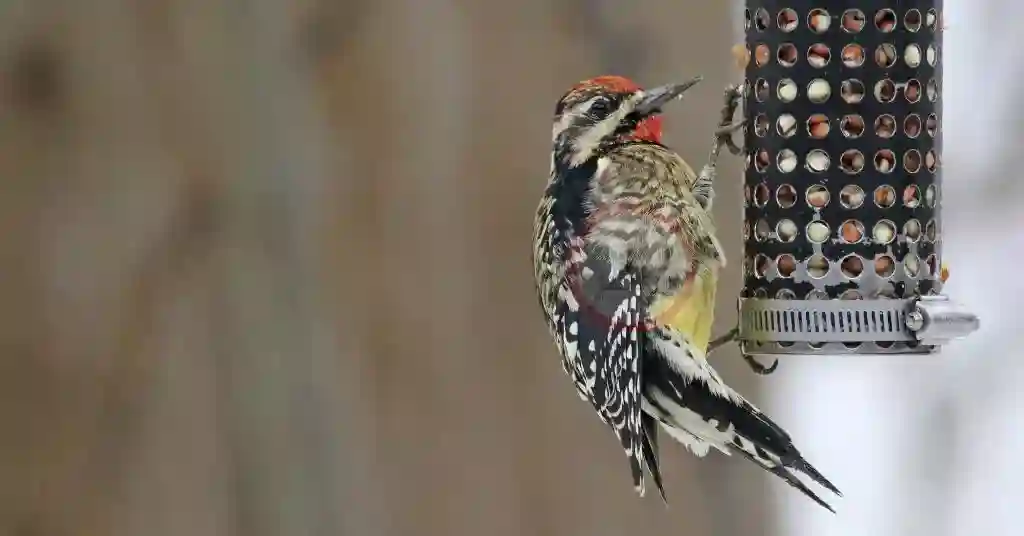
Yellow-bellied Sapsucker is a large, heavily-built bird. The head is brown with a gray or white band across the forehead.
It has a long, slender bill and long, delicate claws. The plumage is dark green with a brown or yellow tail.
Yellow-bellied Sapsuckers are similar to Wood Duck, except they have a green back and yellow belly.
The head pattern may vary depending on the individual, as there are so many distinct subspecies that it can be difficult to tell them apart.
Yellow-bellied Sapsuckers are found in prairies, swamps, and old-growth forests throughout North America and Alaska.
Diet:
The Yellow-bellied Sapsucker is a cavity nester. It seeks out its nesting cavities, usually by probing in old woodpecker holes.
After that it enters and works the cavity until it is completely lined with the soft fur and feathers of its body.
The eggs are laid in March and are incubated for about four to five weeks. The young leave the nest about 10 days before fledging.
After fledging, young Yellow-bellied Sapsuckers will be able to use the nests of other bird species, including the Wood Duck.
After about a month or so, they will continue to build their own nests.
Once that happens, the young will be able to build their own cavity, or will continue to use a cavity that has been abandoned by an adult.
Yellow-bellied Sapsuckers feed on the fruits of various fruiting trees such as the Honey Locust, Mulberry, and Hackberry. The young also eat insects and other invertebrates such as ants.
Range:
Yellow-bellied Sapsuckers have an extensive range. They are found throughout much of Canada, from coast to coast.
They are also found throughout the southern part of the U.S. In Alaska, they are found throughout Southeast Alaska.
In the Western half of Alaska, Yellow-bellied Sapsuckers are found only in the northern parts of the state.
They can also be found in Mexico, where they are found in the north from central Mexico eastward.
Habitat:
Yellow-bellied Sapsuckers are most commonly found in agricultural areas, such as corn and soybean fields, and in riparian areas such as rivers, marshes, and ponds.
They are most common in North America, and rarely occur in colder parts of the country, as they require a fairly warm environment to survive.
Status:
There are no current threats to the survival of Yellow-bellied Sapsuckers.
Behavior:
During the late winter and early spring, Yellow-bellied Sapsuckers migrate to their breeding grounds.
There, they forage on fruits of fruit-bearing trees, such as Honey Locust, Mulberry, and Hackberry.
Breeding:
The male Yellow-bellied Sapsuckers begins to build a decoy nest by placing sticks into a slight depression in the ground.
This nesting area is usually located close to water in an area that provides shade.
The female Yellow-bellied Sapsuckers excavate a shallow, round, egg-laying nest.
The nests can vary from about 10 to 25 centimeters in depth, and can be found underground, or up to 15 meters in the air.
Nest cavities are often found close to an open body of water, such as a pond or a puddle.
The cavity may be near, or above, the water’s surface, and the nest itself may or may not be below the surface.
The female Yellow-bellied Sapsucker is the only known bird species to lay her eggs underwater.
She digs a small hole, up to 7 centimeters deep, in the ground or rocks, and places an egg in this nest cavity.
The egg is approximately 3 centimeters long, and yellow. There are three to five eggs in a clutch.
The female Yellow-bellied Sapsucker sits on the edge of the nest, and guards her eggs until they hatch.
The nests are constructed with sticks, which the male collects, and other natural materials.
The male covers the nest with twigs, branches, or sticks, forming the nest’s exterior. The female may cover the interior, too.
Egg Placement:
When the female Yellow-bellied Sapsucker has laid her eggs, she covers them by spreading debris over them.
The female may keep the nest concealed until the young hatch. At that point, she takes the responsibility of caring for the nestlings.
Nestlings:
The Yellow-bellied Sapsucker takes about a week to hatch.
The nestlings are usually fully feathered when they first hatch, but they grow in size and length of legs over the course of the first ten days of their lives.
When the young leave the nest, they are about 30 centimeters long. The hatchlings are also about 20 grams in weight at the time of hatching.
Best Places for Birds Photography in Maryland
If you’ve never been to the Chesapeake Bay, Maryland, it’s well worth a visit. This is one of the most beautiful places I know of, and it’s been on my bucket list for years.
I have visited the Bay and many of the surrounding waters from Maryland, but it’s been a few years since my last visit to Ocean City.
I thought it would be a great time to return and do a bit of photography and writing on some of the places where birds are found along the Chesapeake.
St. Michaels featured some of the beautiful views and the historic town. And today, we’re heading to Ocean City, Maryland, about a 1-hour drive from St. Michaels.
You can drive south from St. Michaels to Ocean City in about 25 minutes and there is a stop sign before the bridge into the town.
I did some research before we left and found that we could drive along the shoreline until we reached the Ocean City Beach Club.
From there, we’d be driving north until we got to the lighthouse, the southernmost tip of Maryland.
There were a few parking lots along the main road that took you all the way up to the Beach Club, or you could drive to the end of a lane where there was a car park. We took the car park.
Once you park, the main road is a wide, busy thoroughfare and there are so many souvenir shops lining the road.
It’s a tourist town, and every store had a souvenir stand, even the grocery stores.
We walked a bit along the road, finding quite a few different kinds of birds along the way. There were gulls, white pelicans, red-legged partridges, and many more species.
When to take Birds Photography in Maryland?
Birding is not just about spotting the most common birds in Maryland. Every part of the state offers a different range of species, all with their own unique beauty.
It is also about the art of photographing them.
If you are a bird lover, Maryland is the best place for you. The state has so much to offer that you will not be disappointed to come here. Here is the birding season in Maryland.
The Maryland birding season is not the same as that of the other northeastern states. It spans a longer period compared to the other states.
The peak birding season in Maryland starts in June and ends in August.
June:
June is one of the best months to explore the state. In this month, bird migration takes place.
This is when a large number of species migrate to the south. In many ways, these are the biggest migratory periods in the year.
Therefore, you will have plenty of time to admire the birds as they pass through the state. The peak month is June. This is when bird migration starts to pick up pace.
If you plan to spend time in Maryland during this time, do not forget to book your stay in advance.
July:
During July, the spring migrants are moving towards their breeding grounds. Therefore, you will find fewer birds around. However, most of the species are still available.
It is best to time your visit to Maryland during this time. These are the best months to visit Maryland because it is one of the least crowded periods in the year.
August:
During August, the migration began. Many birds from temperate regions have started to migrate towards their breeding grounds.
It is also a month where you will find fewer migrants around. This is because they are searching for a suitable breeding site.
If you are planning to visit Maryland during this time, book your accommodation in advance. However, you can still enjoy some breathtaking views of the autumn migration.
September:
September is one of the least busy months for birders. In this month, a lot of migrants are returning from their breeding grounds.
However, during this time, it is better to visit the state in the early morning.
It is easier to spot birds because of the low levels of human activity. If you want to travel by bus during this time, plan your journey well in advance.
It is possible to find a good number of birds during this time.
October:
October is a busy month for birders. However, if you are visiting the state during this time, it is best to visit in the early morning or the late afternoon.
Many birds have begun to return to their breeding sites. However, the peak season has not yet kicked in.
Therefore, it is better to visit during the autumn migration. You will find a large number of species in Maryland.
November:
November is a special time for birding. If you want to travel to Maryland, plan your trip in advance.
It is a good time to visit the state. If you have visited during the autumn migration, the peak season is yet to come.
Although the weather is still perfect for bird watching, there is no guarantee that the birding will be that good.
December:
December is a great month for birders. If you are planning to visit Maryland during this time, you should plan well in advance.
Many birds are migrating from their breeding grounds and it is best to visit before they get too cold.
Although the peak season has not begun, there are still plenty of birds to be seen.
FAQs:
What is the name of this place in Maryland?
The capital of Maryland is Annapolis.
Who is the photographer who took the photograph?
While it might seem simple, the photographer is the one who took the photograph.
When was the photograph taken?
The photographer may have taken the photo on a holiday, on a weekend, on an excursion, or it may have been part of their daily life. The environment may also provide clues as to where the photo was taken.
Conclusion:
In this article mentioned above the birds in Maryland where you can find a lot of birds for Photography.
The wildlife in Maryland is a fantastic place for photography with many beautiful birds to take pictures of.
Maryland offers a wide variety of birds, from the bald eagle to the Baltimore oriole.
The large number of bird species in Maryland is attributed to its location on the east coast and diversity of habitats found within the state.
A lot of these birds are migratory which means they visit Maryland during different times of year. I hope you enjoyed our article about Beautiful 8 Birds in Maryland for Best Photography.
If yes, then do share these articles with your loved ones, family, and friends.
Thank you for Reading!

